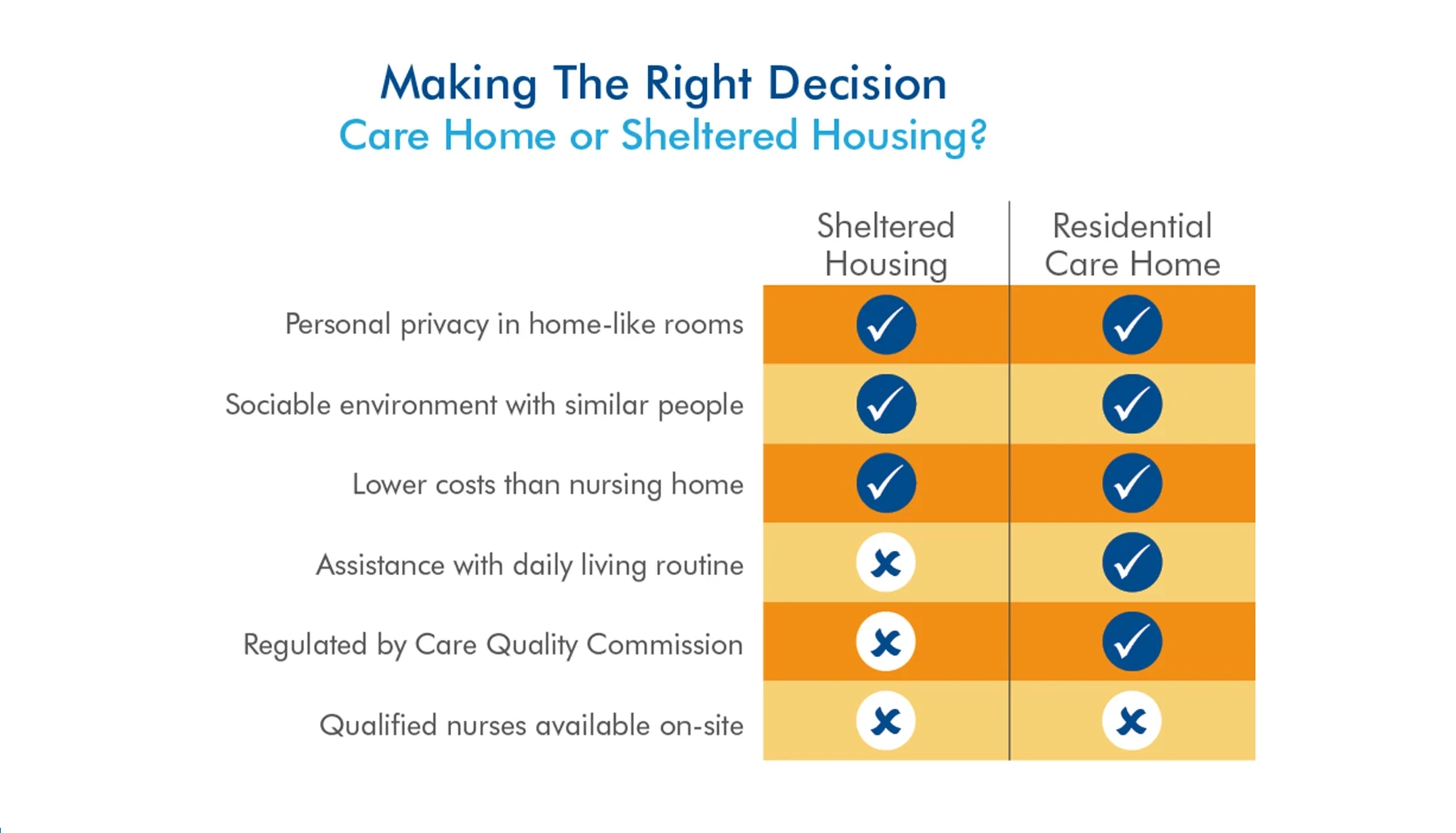Choosing your ideal retirement home: Sheltered Housing vs Care Homes
Feeling unsure about retirement housing options? This guide explores the key differences between sheltered housing and care homes in the UK. We'll cover what matters most to older people, highlight similarities, and go through the distinctions between the services.
Understanding the differences between care homes and sheltered housing is crucial. While both offer support, they cater to varying needs.
Choosing a retirement home is a big decision for older people and their families. While sheltered housing and residential care homes offer different levels of support, they both aim to enhance the wellbeing of residents.
Prioritising resident wellbeing
This article explores the key factors that contribute to a high quality of life for older adults in retirement communities, based on a study by the National Housing Federation & JRF.org.uk.
This includes:
· Privacy and independence: Residents value having their own space with a private entrance, allowing them autonomy. The ability to make personal choices, with support when needed, helps to maintain dignity, and help make it feel like home.
· Friendship and companionship: The study found that nearly half of residents reported improved social connection with family and friends after moving into retirement housing. In addition to this, 75% felt that their community offered opportunities to make new friends. At Abbeyfield residents having opportunities for interaction and activities to socialise and form friendships, which help to combat loneliness and promote mental wellbeing.
· Safety and security: The report highlighted the importance of security, especially for older people. Abbeyfield offers secure homes with readily available support staff to provide extra peace of mind.
· Being involved in decision making: Feeling involved in choices about their care and the overall home is important to residents.
When considering retirement housing options, focus on finding a community that aligns with yours and your loved one’s values and needs. Abbeyfield’s focus, like many retirement housing providers, is to prioritise all of the wellbeing factors mentioned in this study.
What are the similarities between care homes and sheltered housing?
· Private accommodation: both care homes and sheltered housing offer studio flats or rooms for residents’ privacy.
· Social activities: there are opportunities to social with other residents, volunteers and staff through shared meal times and organised events.
· No on-site nursing care: daily medial needs are typically addressed by district nurses and generally the costs are lower than that of a nursing home.
Key differences between care homes and sheltered housing
At a care home:
- Assistance with daily living routines: Residents receive help with washing, dressing, medication reminders, mobility, and meals, whilst following a personalised care plan.
- CQC regulation: Care homes in England undergo inspections by the Care Quality Commission (CQC).
Sheltered housing:
- Suited for older people who can manage daily tasks but prefer a social environment and some support.
- Residents have more autonomy in their routines
- Sheltered housing is regulated by the Government’s Home & Communities Agency.
Which type of retirement housing is right for you?
Consider your specific needs. Sheltered housing offers independence with support, whilst care homes provide a higher level of daily assistance.

Next steps

What type of care do I need?
If you think you, or someone you know, needs care, the first step is to get a care needs assessment from your local council. We've put together a guide on the care needs assessment process, how to prepare and what happens after you've had an assessment.

When is the right time to move into a care home?
Arranging care at home or moving into residential care or sheltered living can be a complex process, but we’re here to help. We’ll take you through paying for care, step by step.

Housing options for older people
If you’re thinking about where you might like to move as you get older we can help. We've listed some housing options for older people for you to explore and find out the difference between each.
